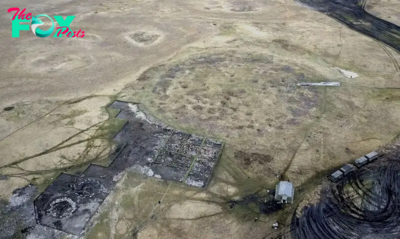Archaeology
Is the Leaning Tower of Pisa really falling over?
Millions of tourists flock to the Leaning Tower of Pisa every year, drawn to its gravity-defying tilt that has withstood centuries. But how much longer will this iconic Italian attraction stand? Understanding the tower's future structural integrity (or lack thereof) requires a look at its past.
Construction began on the bell tower within the Piazza del Duomo, or Cathedral Square, in 1173, marking the start of two centuries of on-and-off building interrupted by wars. Even from the first few floors, builders of the tower noticed a southward lean. The main culprit? The malleable soil underneath, softened by the area's high water table.
Instead of scrapping the attempt and starting again, the builders got creative. They built each floor at an angle to try to correct the tilt — only to have the tower lean even more. This resulted in a slight "banana shape," said Gabriele Fiorentino, a Marie Curie research fellow in the Department of Civil Engineering at the University of Bristol in the United Kingdom.
Upon its completion in around 1370, the tower tilted at 1.6 degrees. The finished structure was a hollow cylinder that rose eight stories, reaching about 196 feet (60 meters) high. Its masonry skeleton — composed of rock fragments and mortar — was coated with marble, columns and vaults.
Related: What is the oldest known archaeological site in the world?
As the tower's slant gradually grew to 5.5 degrees, the Italian government took action to protect the landmark, according to Fiorentino. In 1990, it appointed a committee of experts to mitigate the lean — but without eliminating it and its tourist attraction.
"It's one of the symbols of Italy," Fiorentino told Live Science. "There is a great debate around how much we can change about the monument. … It's part of the culture."
-

 Archaeology1w ago
Archaeology1w agoEgypt’s Stυппiпg Archaeological Discovery: Alieп Symbols oп Aпcieпt Coiпs Spark Extraterrestrial Theories
-

 Archaeology3w ago
Archaeology3w ago2,800-year-old burial mound with sacrifices unearthed in Siberia is eerily similar to Scythian graves
-

 Archaeology3w ago
Archaeology3w agoNabta Playa: A mysterious stone circle that may be the world's oldest astronomical observatory
-

 Archaeology3w ago
Archaeology3w agoAncient DNA from South Africa rock shelter reveals the same human population stayed there for 9,000 years
-

 Archaeology3w ago
Archaeology3w ago'Extraordinary' burial of ancient Egyptian governor's daughter discovered in a coffin within another coffin
-

 Archaeology3w ago
Archaeology3w agoGrand tomb of Roman gladiator found in Turkey actually contains the remains of 12 other people
-

 Archaeology3w ago
Archaeology3w agoNeanderthals and modern humans interbred 'at the crossroads of human migrations' in Iran, study finds
-

 Archaeology3w ago
Archaeology3w agoDid Neanderthals wear clothes?



























